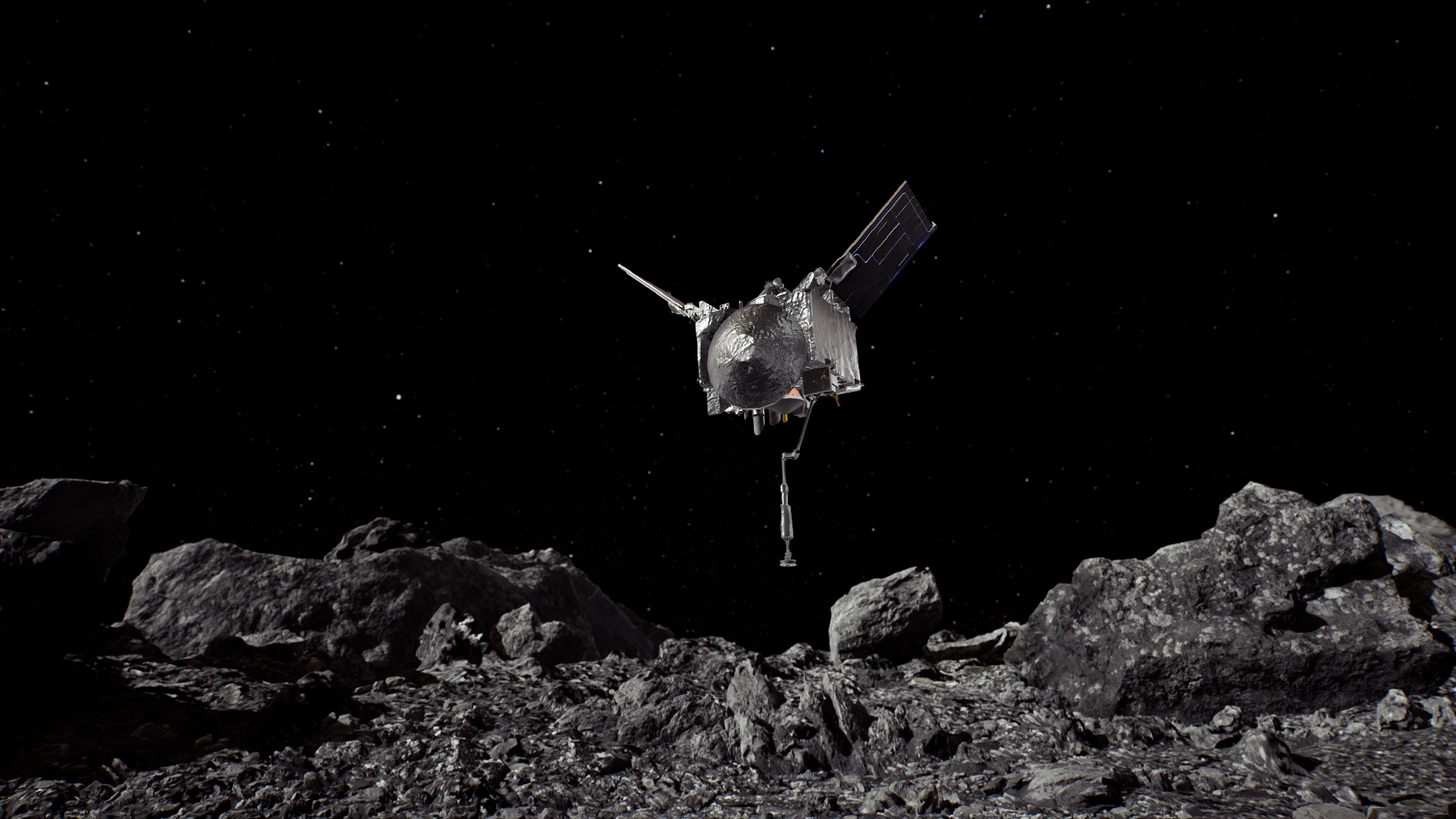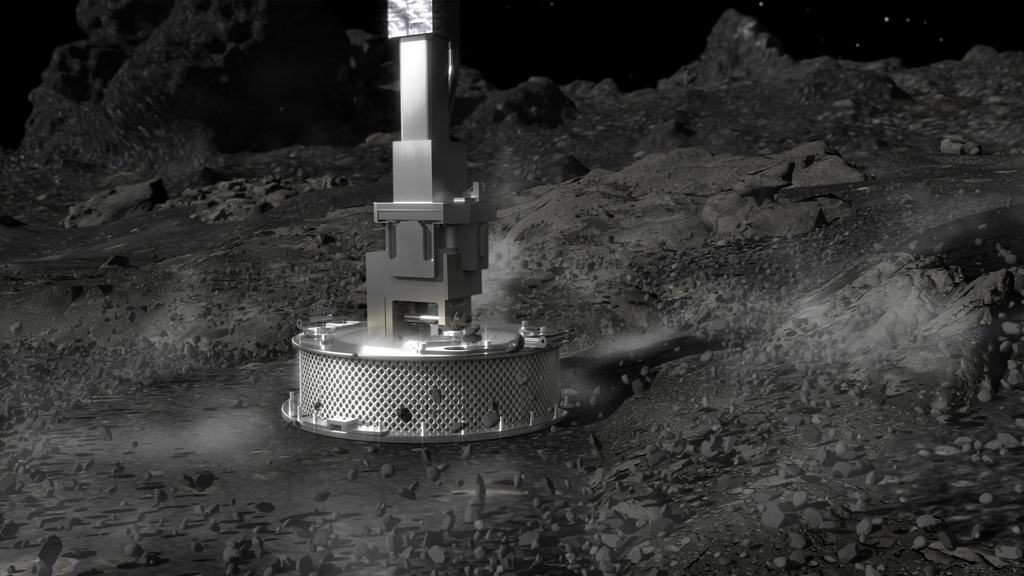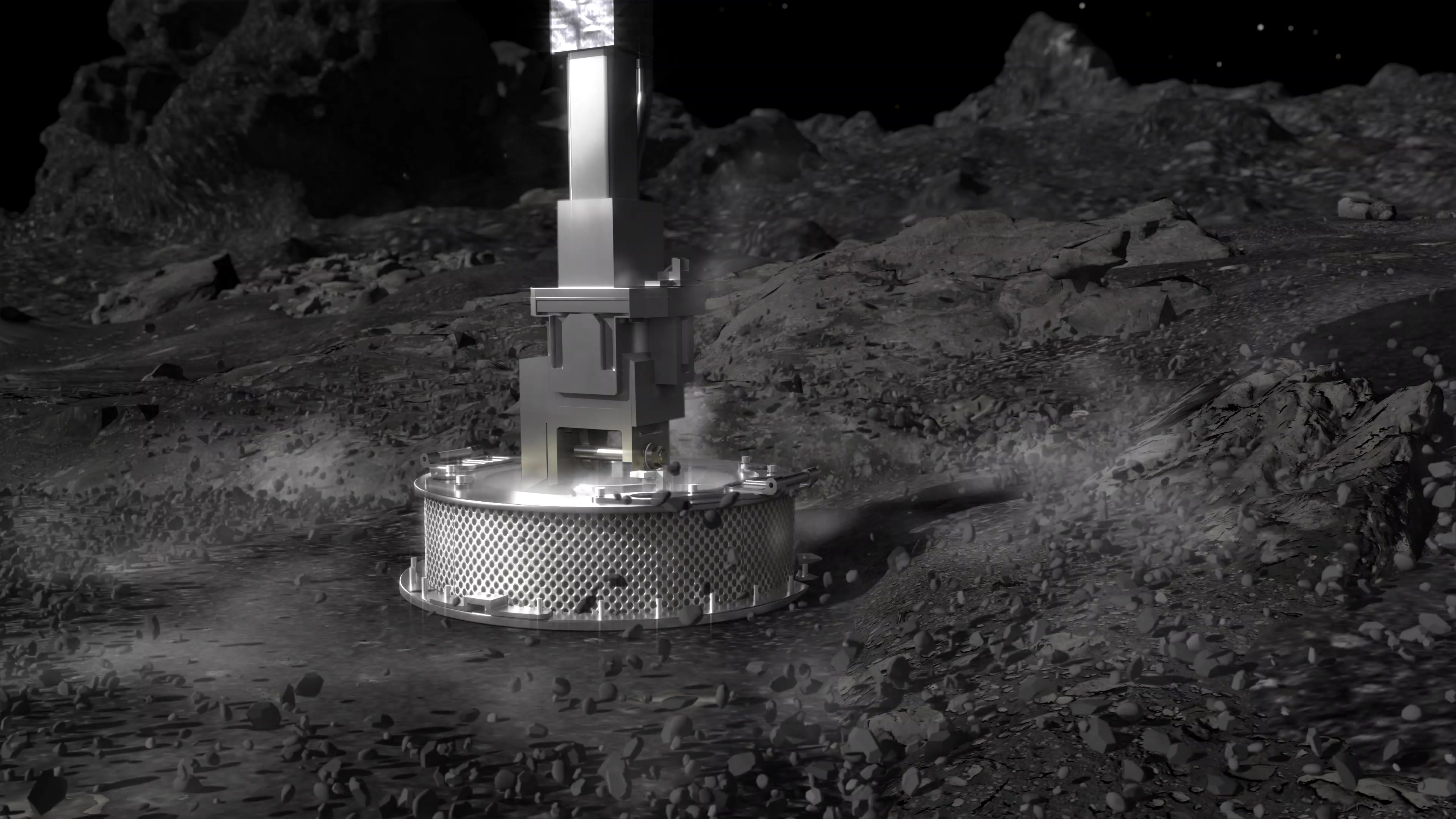OSIRIS-REx "What If?" Scenarios: Animations
"Wave Off" Scenario
Space exploration is notoriously difficult. Getting to the surface of an asteroid and backing away in one piece requires planning for lots of stuff that could go wrong. This resource page provides animations of various "What if?" scenarios that OSIRIS-REx could encounter on its way to the surface of asteroid Bennu. OSIRIS-REx is NASA's first asteroid-sample return mission. Its goal is to study Bennu and return a sample to Earth in 2023.
All animations available in 4K Ultra HD resolution.
"Tip Over" Scenario
"Boulder" Scenario
"Pile of Rocks" Scenario
For More Information
See NASA.gov
Credits
Please give credit for this item to:
NASA's Goddard Space Flight Center Conceptual Image Lab
-
Animators
- Bailee DesRocher (USRA)
- Jacquelyn DeMink (USRA)
-
Art director
- Michael Lentz (USRA)
-
Producer
- Dan Gallagher (USRA)
-
Technical support
- Aaron E. Lepsch (ADNET Systems, Inc.)
-
Support
- Michael Moreau (NASA/GSFC)
- David A. Lorenz (SGT)
Release date
This page was originally published on Tuesday, October 20, 2020.
This page was last updated on Wednesday, May 3, 2023 at 1:44 PM EDT.



